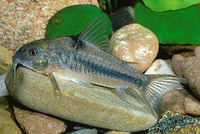|
Corydoras nattereri, Blue corydoras: aquarium

| 해상도: 400x267
파일크기: 43750 Bytes
등록시간: 2008:04:17 14:46:09
|
ERROR : Server Busy(-1105)
ERROR : Server Busy(-1105)
Corydoras nattereri, Blue corydoras: aquarium
Corydoras nattereri, Blue corydoras: aquarium
Image of Corydoras nattereri, Blue corydoras, Blå pansermalle, Natterer
AquaNet
Point map
Order:
Siluriformes
(catfish)
Class:
Actinopterygii (ray-finned fishes)
FishBase name:
Blue corydoras
|
^o^
동물그림창고 똑똑전화 누리집
^o^
|
|